The First Kwanzaa
On December 26, 1966, Maulana Karenga celebrated the first Kwanzaa.
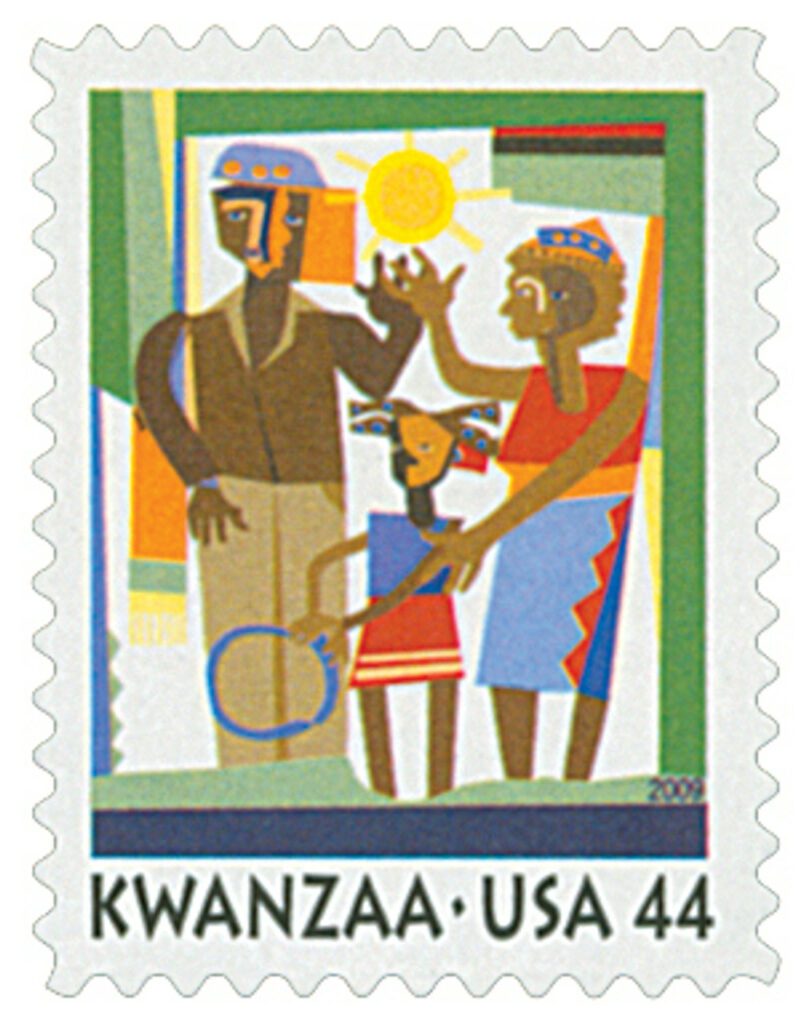
In 1965, a deadly riot rocked a largely African-American neighborhood in Los Angeles, leaving 34 dead and 1,000 injured. Professor of Black Studies and former activist Maulana Karenga was disturbed by the violence. He wanted to help the African American community overcome the despair this riot, and ones like it, had caused. Karenga was then inspired by the African harvest celebrations to establish his own non-religious holiday that would stress the importance of family and community.
So, on December 26, 1966, Karenga led his community in celebrating the first Kwanzaa. The name is taken from a phrase meaning “first fruits” in Swahili, an East African language.
With its fusion of ancient African practices and African-American ideals and aspirations, Kwanzaa is a non-denominational celebration. It is seen as a time for the gathering of families, and for rededication to the seven principles of Nguzo Saba, a set of values as expressed by Karenga.
The Kwanzaa principles are Umoja (unity), Kujichagulia (self-determination), Ujima (collective work and responsibility), Ujamaa (cooperative economics), Nia (purpose), Kuumba (creativity), and Imani (faith). Each day of Kwanzaa is dedicated to one of these principles.
During each evening of the seven-day holiday, family members light one of the seven candles of the kinara (candleholder), and then discuss that day’s principle. The first is the black candle in the center, which symbolizes African people everywhere. Three red candles, representing the blood of ancestors, are on the left. Three green candles, symbolizing the earth, life, and promise for the future, are on the right.
There are several items common to a Kwanzaa celebration that have special significance. They are the mkeka, a straw mat symbolizing the earth; muhindi, ears of corn that symbolize offspring; zawadi, gifts symbolizing the parents’ work and the rewards of children; kinara, a seven-space candle holder, symbolizing the stalk from which the African people grew; and mishumaa saba, seven candles symbolizing the Seven Principles.

Participants often exchange gifts. Near the end of the holiday, the community gathers for a feast called karamu, which may include performances, music, and dancing.
One of the biggest Kwanzaa celebrations is “The Spirit of Kwanzaa.” The event – which is held annualy at the John F. Kennedy Center for the Performing Arts in Washington, D.C. – consists of dancing, singing, and poetry by members of the African American community.
Through the years, Kwanzaa has become a true celebration. It is about remembering the past and looking forward to the future. The African American community has become more united because of the holiday. Kwanzaa has led to more recognition of the African American community and their valuable contributions to our society.
Click here to get all the Kwanzaa stamps issued through 2022.
Discover what else happened on This Day in History.



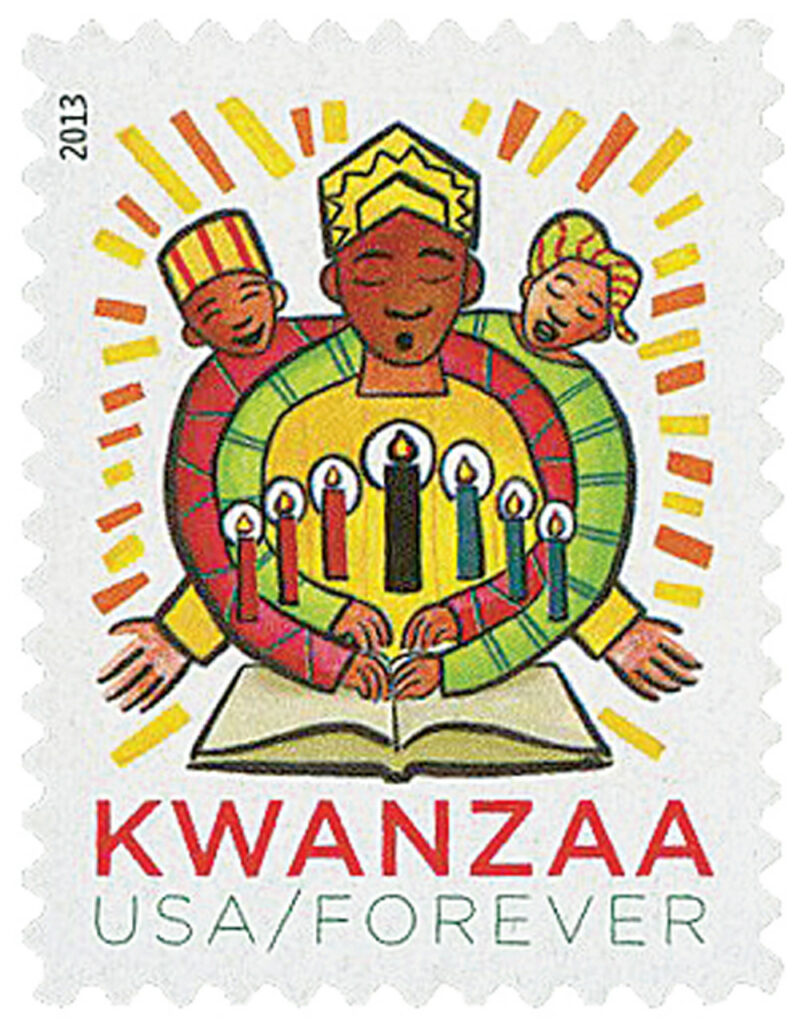
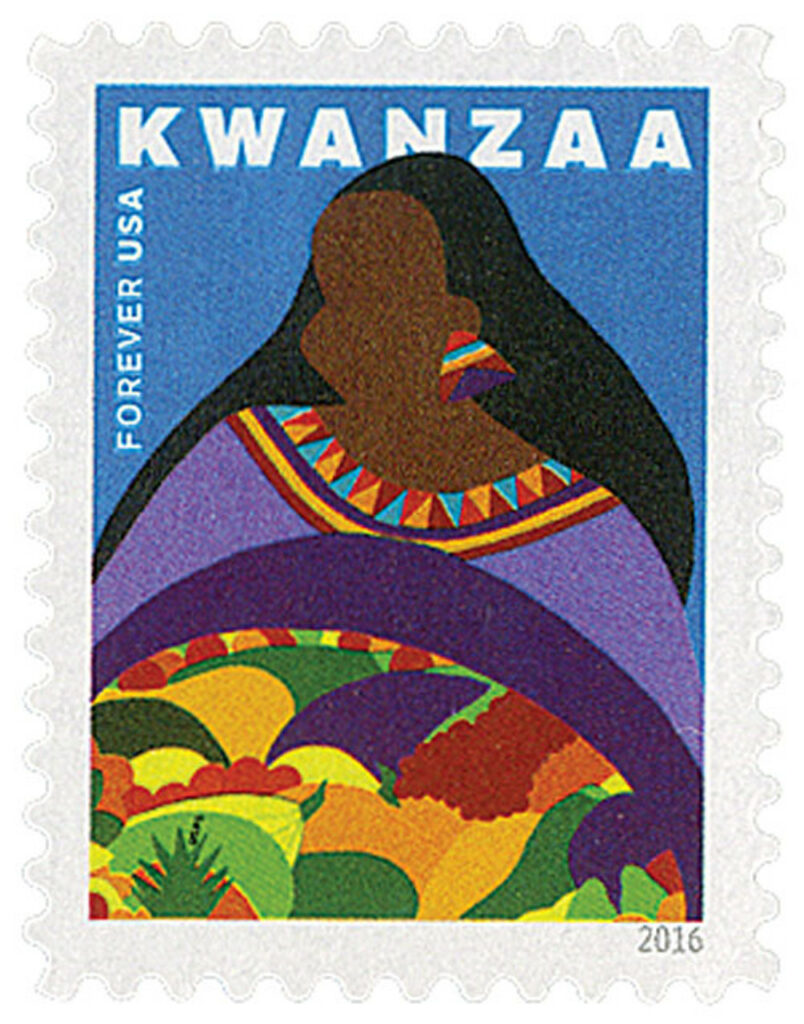
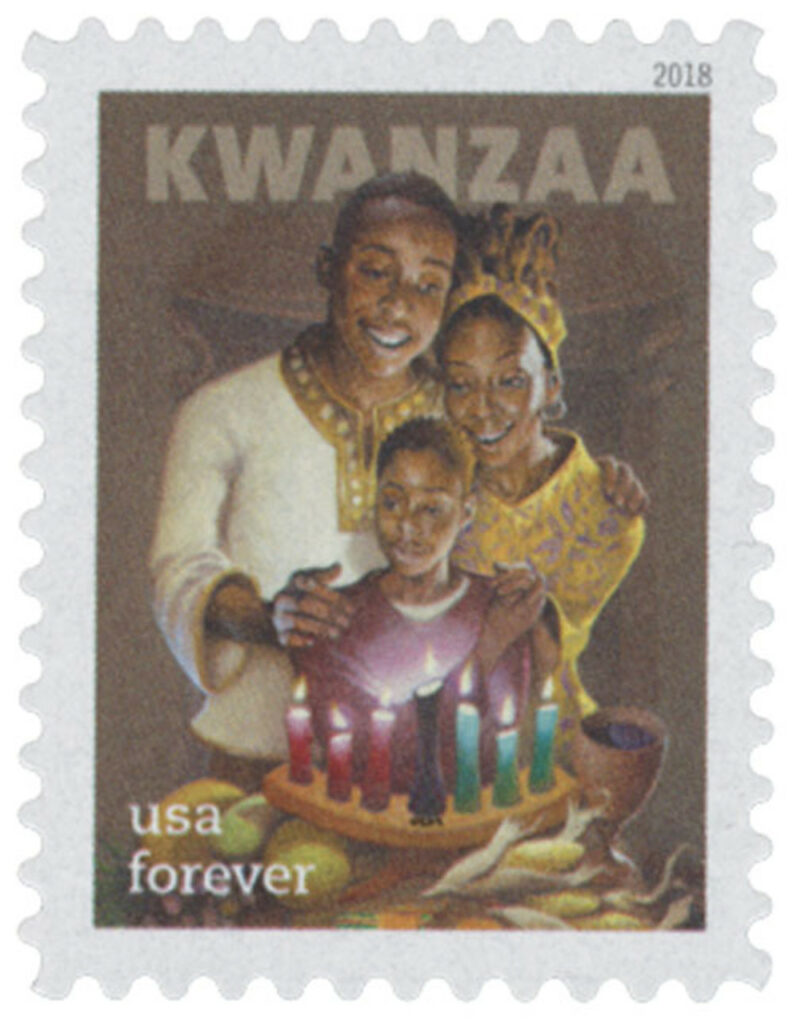
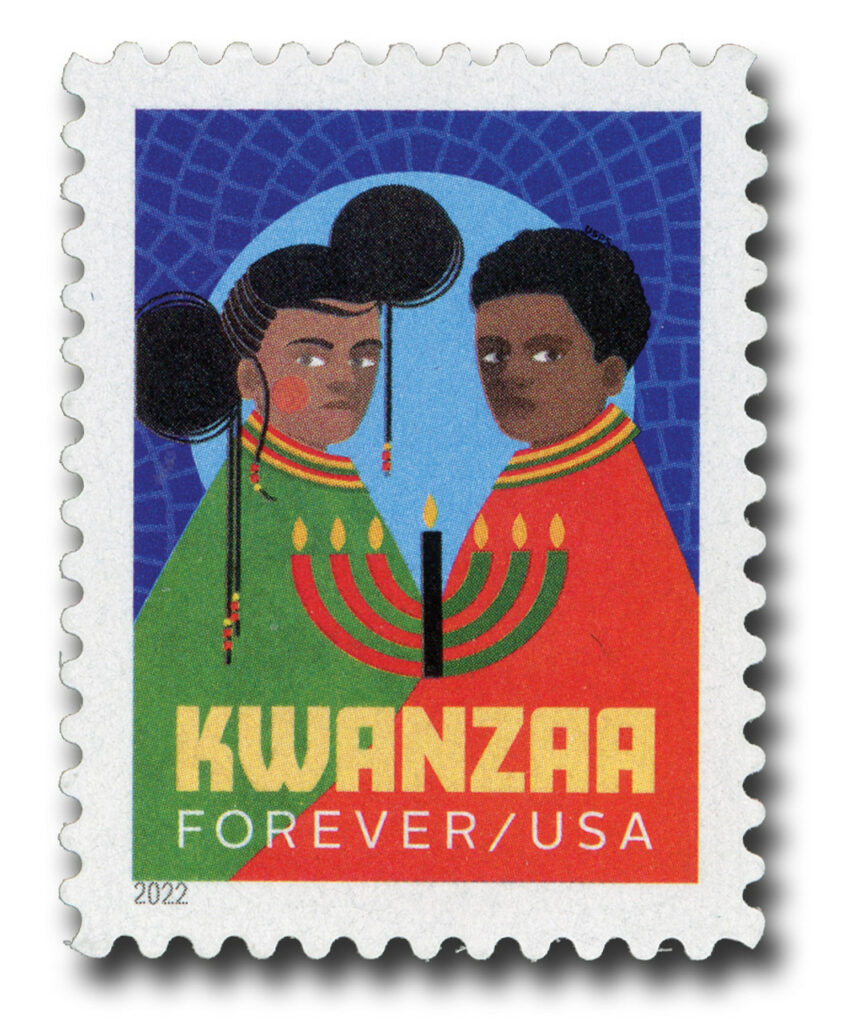
An excellent overview, thank you.
Oher people should celebrate there religeon.s!
Like the Jewishh celebrate Hankkah.and Christmascelebrated
by the Christians ,And Knownsa by African-Americans>
Not a real holiday. I won’t even but these stamps. Happy Boxing Day.
I meant “buy” these stamps . . .
When I was first introduced to this idea several years ago, I was very apprehensive. After I understood its purpose and origin, I then became receptive to it. Although it is nondenominational, it definitely has overtones that are biblically based. That’s a good thing.
Lovely. Thank you for posting this timely seasonal information.
Thanks, Mystic for this informative article on Kwanzaa. I never knew exactly what Kwanzaa was and now I do. Happy Kwanzaa to everyone who celebrates. I hope you have a great Holiday and a prosperous New Year.
Kwanzaa is a hoax–brought to you by the same people who made up global warming.
I had no idea Maulana Karenga was involved with the issue of global warming. Where did you obtain that information?
Thanks for this article. I never knew what Kwanzaa really was.
Thank you for this posting. Very informative and celebratory. I am an older white woman. Perhaps, one day, I can find an African-American family that would let me participate. Unity and celebration are part of this season. It does not matter what color you are or religion. Thank you.
Oh Scott, Scott. To compare a holiday emphasizing family and dedication to certain human principles to established scientifically established conditions is , well, pathetic. Read a book, get a life.
I, likewise, never knew what Kwanzaa was all about. Whether a “real” holiday or not, what it represents is the celebration of principles and qualities that each one of us and our offsprings should strive for. It would make for a better place and most likely get some of the evil out of the world today. Also, “real” collectors would collect ANY stamp, regardless of theme.
Any celebration with peace & goodness as essential elements, is a good celebration.I support them all.